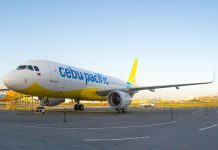
The World Bank’s generous support for the Philippines’ sustainable development programs is a key factor in helping the country secure its status as an upper middle-income economy in 2019, three years ahead of its targeted schedule, Finance Secretary Carlos Dominguez III has said.
Dominguez said he looks forward to “new forms of cooperation” with the World Bank as it institutes reforms to respond to the changing needs of its diverse membership, armed with a stronger financial capacity as a result of its recent general and selective capital increase, which the Philippines had strongly endorsed and supported.
Dominguez thanked the World Bank for its assistance over the last six decades to the Philippines’ development efforts in, among others, human capital development, disaster risk management, education, transport, environment and energy.
He further cited World Bank’s support for the Philippines’ peace and development efforts in Mindanao’s conflict-ridden areas, which “has been a major component of the Bank’s program in the country.”
“For many decades, the World Bank helped many emerging economies achieve sustainable development. This year, as the Bank celebrates its 75th year, we are proud to announce that the Philippines will achieve the status of an ‘upper middle-income’ nation ahead of schedule. The Bank shares much credit for this achievement,” said Dominguez during the Philippine Day Forum held recently at the Grand Hyatt Hotel here.
The event was organized by the World Bank with support from Citi, Standard Chartered Bank and UBS, to share with leaders of the American business community the Philippines’ growth story and the progress that the country has achieved over the recent years of implementing reforms to power its economy.
Under the Duterte administration, the government had targeted to achieve upper middle-income status by 2022, and become a high-income economy by 2040. The government has also targeted to bring down poverty incidence from 21.6 percent in 2015 to just 14 percent by the end of President Duterte’s term three years from now.
Based on World Bank criteria for fiscal year 2019, an upper middle-income country should have a Gross National Income (GNI) per capita of between $3,896 to $12,055. The Philippines is currently classified as a lower middle-income country with GNI per capita of between $996 and $3,895. High-income economies are those with a GNI per capita of $12,056 or more.
But with the resilience it had displayed under an inclusive economy, which posted a GDP growth rate of 6.2 percent last year–despite uncertainties of a looming trade war, a sharp spike in oil prices, and an elevated domestic inflation rate–Dominguez said the Philippines is poised to reach upper middle-income status ahead of target this year.
“Today, the Philippines is one of the fastest growing economies in the world. Reaching this milestone in our development story is attributable to many years of hard work—especially in building a strong fiscal position and a bureaucracy honed to the task of catalyzing growth,” the Finance chief said. DOF






